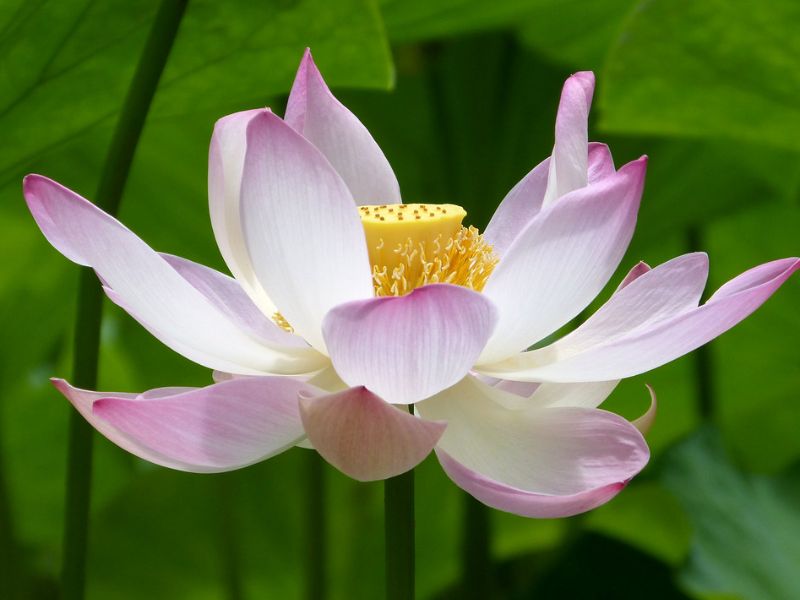Do you want that dream-like spring you saw in your favorite movie? Take your landscape to another level with forsythia. We will give you every information you will need to grow forsythia, and may your spring bloom just like these bright yellow flowers.
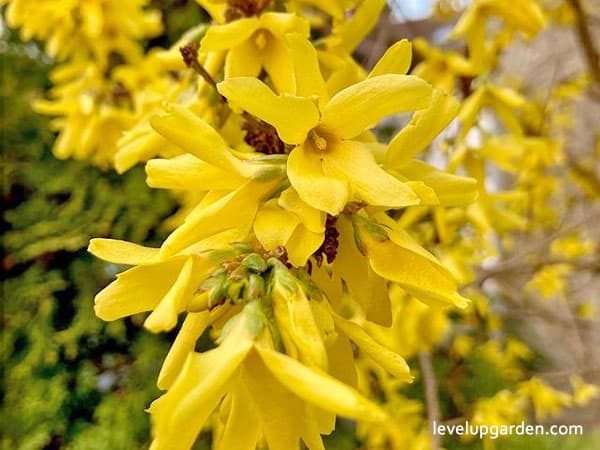
The weather is warm, birds are chirping, and of course, flowers are blooming. These are the signs that spring is here. One of the flowers that makes the streets beautiful is forsythia. It is a deciduous shrub that blooms in early spring and grows from 3 to 10 feet wide.
Forsythia is the ideal plant to make the landscape in your yard prettier. This shrub grows in a wide range of conditions and grows fast. As long as it stays evenly moist, then you’re good to go.
To get that beautiful shade of bright yellow, the following is the basic information that you will need to grow forsythia.
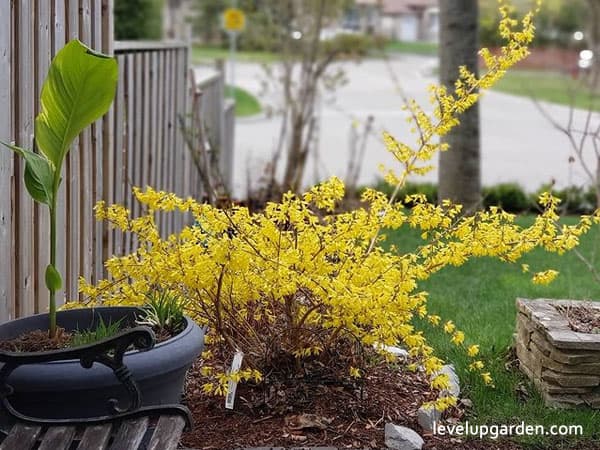
Forsythia Profile
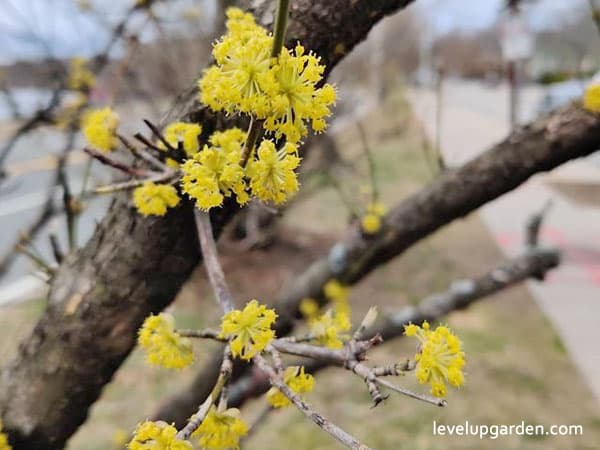
| Common names | Forsythia “Golden Bell” |
| Fun Fact | The name Forsythia is named after the royal gardener and a Scottish botanist William Forsyth, a founding member of the Royal Horticultural Society. |
| Genus | Forsythia Vahl |
| Family | Oleaceae – Olive Family |
| Plant Type | Deciduous shrub |
| Origin | Forsythia actually originated in Asia, but in the 19th century, the shrub appeared in Europe. During World War I, American hybrids were developed. From then on, different species can be found in America.(1) |
| Hardiness Zones | 5 – 8 |
| Growth Rate | More than 24” per year |
| Mature Height | 10’ – 12’ |
| Mature Width | 10’ -12’ |
| Bloom Time | Late March to Mid-April |
| Sun Exposure | At least six (6) hours a day |
| Lifespan | 25 – 50 years |
Forsythia Appearance
- Leaf: Deep green in color and changes to violet before falling, has “teeth” in the edges.
- Bloom Period: Late March to Mid-April, just before the winter ends, the forsythia flowers start to bloom.
- Twig/Bud: Square or ‘4-rigged’ and brown in color
- Fruit: Known as “Lian Qian”, it has a shape like a pecan and is brown in color. This fruit is widely used in teas and tinctures. It is also known because of its healing properties.
- Flower color: 4 elongated petals, bright yellow or gold
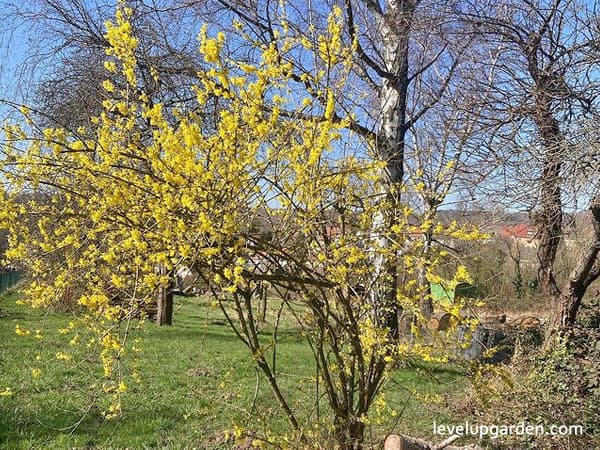
Growing & Care Conditions
Light
Forsythia likes to enjoy the sunlight. Planting it where it can get sunlight at least six (6) hours a day will maximize the bloom of its bright yellow flowers.
Soil
Forsythia grows best when planted in well-draining soil. However, too much moisture on the soil cannot grow the plant.
Water
Although the forsythia shrub can tolerate drought, it needs water to grow properly. It has to be watered weekly at least 2 inches of water.
Temperature and Humidity
Forsythias grow best at the temperature of 55 to 75 Fahrenheit. It still grows at a cold temperature, but at -5 degrees, the flowers might not bloom in spring. Forsythia likes slight humidity and might wilt in humid and dry conditions.(2)
Fertilizer
Introducing fertilizer to Forsythia in its first months might damage the plant. It is better to introduce fertilizer after a year of planting. Use balanced fertilizer every 2 -3 months only in spring and summer.
Pests and Diseases
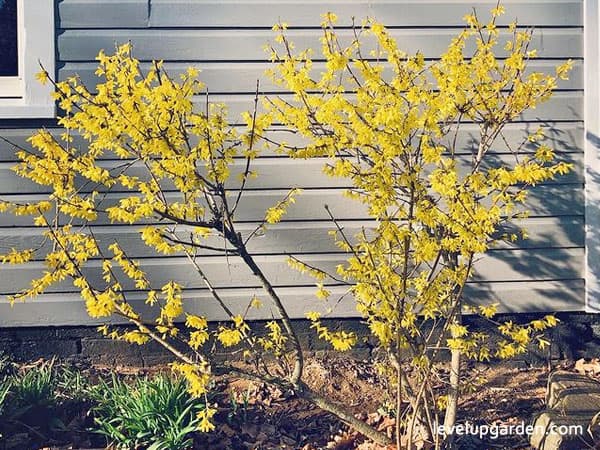
Young Forsythias are prone to Aphids. Aphids leave their waste on the plant that leading to the formation of molds. A very convenient way to prevent this is by using high-pressure water from the hose.
Another problem of Forsythia is fungi. Galls and twig blights can form along the stems. The first step is to remove the infected stems, then prune them properly before applying fungicide.
Climate zones that are borderline with the plant’s hardiness are already dangerous for Forsythia. In that situation, unexpected frost might kill the flower bud. But if it is still in its hardiness rating, unexpected frost will not kill the flower bud, and the flower will return after a year.
Pruning
Pruning is actually not necessary for the growth of Forsythia, and it will grow without pruning. Without pruning, branches of this plant shoot out in random directions making your yard look like a jungle. To avoid that mess, you might want to learn how to prune Forsythia properly.
You should prune for a better look at your landscape, and you should prune after the flowers finish blooming in spring because flowers bloom in the wood from the previous year. If you wait until the end of spring, you might not get that beautiful yellow bloom next spring.
Let the new branches grow and cut the old branches to the ground for a better form. You can also shape your shrub by carefully pruning new branches.
Harvesting
Forsythia is not only for decoration. Sure, the flowers make that spring memorable. But do you know that its flowers have many uses and are edible? Before letting those flowers fall, you might as well give it good use. You can use it for cooking, making beauty products, and everything you can infuse its scent too.
There is no special method for harvesting flowers of forsythia. You can pluck it when it looks the best, and it is ready for everything you make it into.
Varieties
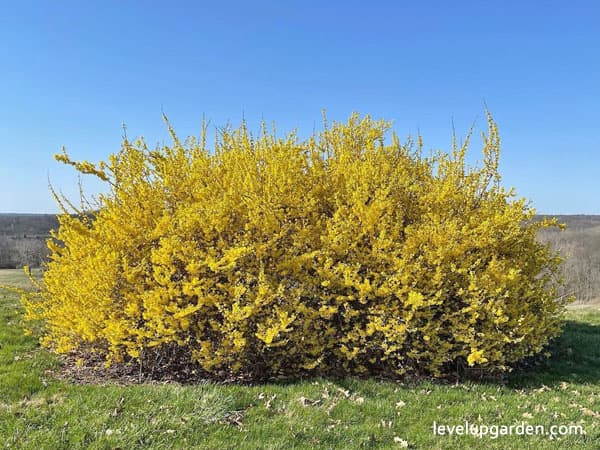
Lynwood Gold
Probably the most common variety of Forsythia, Forsythia x intermedia “Lynwood Gold”. The foliage of this shrub changes from yellow to gold in spring, then in autumn, it turns to a shade of purple perfect for the sentiment of autumn.
This type grows to a height of six to eight feet and a width of eight to ten feet. Lynwood Gold is one of the most common types used in decoration as it grows in an upward manner.
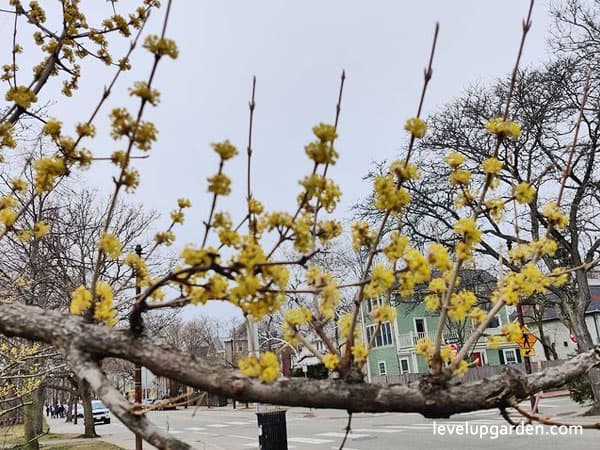
Sunrise
Another variety of Forsythia x intermedia, “Sunrise” also turns to purple in autumn. It is a great plant to use for your landscape because it goes well alone and blends perfectly with other plants.
Its height of four to six feet is perfect for that garden you always wanted. This shrub is hardy to zone 4, just right for late winter to early spring.
Kumson
Forsythia viridissima, a variety from Korea also known as “Kumson”, translates to golden hands. The striking colors of its brown stems in winter, bronze leaves in autumn, and gold in spring make it an all-year-round beauty.
Like “Sunrise”, it grows upward and gets to a height of four to six feet. The signature of this variety is its veins that make that beautiful silver lattice. Mixed this with your other plants to make the picturesque garden.
Border Forsythia
Known for its bright yellow flowers, Border Forsythia, also known as “Golden Bells” is the most popular variety of Forsythia. This type was discovered in Germany, the reason why it is so popular in Europe. Its yellow flowers stand out among the green regions of Europe.
This deciduous shrub grows to a height of eight to ten feet. Good sunlight is the best for this type, but it can adapt to temperature changes.
Gold Tide Courtasol
Forsythia Courtasol is one of the favorite plants for gardens. Make your walkway stunning with its lemon-yellow flower and light green leaves that turn into a beautiful shade of purple in autumn.
This plant is known for its growing characteristic, and it is a compact shrub as it grows three to four feet wide and only up to two feet tall. The blooming period of this shrub starts in March and ends in April.
White Forsythia
For a good balance in your garden, how about a shade of white? White Forsythia, unlike other varieties, grows best in partially shaded conditions. But its biggest strength is that it can resist cold temperatures.
From Oleaceae family, best planted in fall season to bloom around March. This grows to a height of three to six feet. Its properties are similar witch hazel plant, a plant used for skincare products.
Fiesta
The good mix of its yellow flowers, green foliage, and red stems reminds you of a festival. If you want that stunning border in your landscape, don’t hesitate and get that Fiesta Forsythia.
This plant grows to an average height of three to four feet tall and wide. The best with full sun to partial shade and grows with most types of soil. This does not require much attention but definitely will get attention from onlookers.
Magical Gold
Magical Gold Forsythia’s rich golden-yellow flowers deserve a spot in your landscape. With a good location, this can be a star in its blooming period and a good mix of your green plants.
Watering regularly or on a weekly basis is enough to get that beautiful glow. But when there is extreme heat, water it more often. It can grow up to five feet tall and four feet wide.
Meadowlark
Make that rustic-style garden with Meadowlark’s yellow flowers and green foliage. Its compact growth habit is perfect for the sides of your garden walkway. Its hardy zone of three to nine makes it adapt to most climate conditions.
This grows up to eight feet tall and up to 10 feet wide. As long as it gets the sunlight it needs, it is going to be fine. In extreme heat, it needs more water, but once it is settled, you can lessen the water it gets.
Uses of Forsythia
Medicine
The fruit of Forsythia is said to have medicinal uses. Researchers have proven that it can be used for various symptoms, such as:
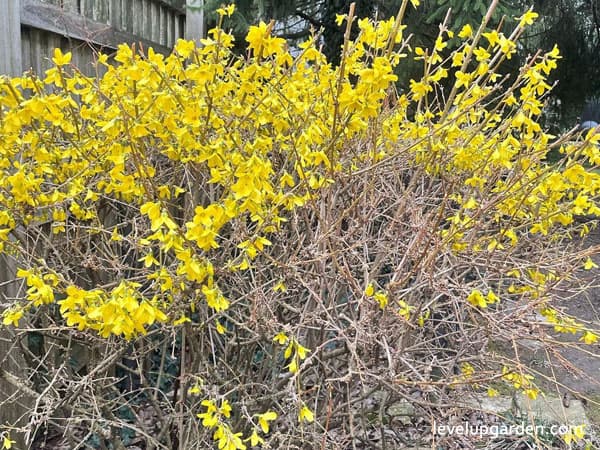
- Swelling of small air passages in the lung or bronchiolitis
- Tonsillitis
- Sore throat
- Fever
- Vomiting
- Heart disease
- HIV/AIDS
- Gonorrhea
- Pain and swelling or inflammation
- Severe skin rash with fever
- Vomiting is caused by a bacterium erysipelas
Skin Care Products
The flowers of Forsythia can be transformed into the products you use for your daily skincare routine. Following are the products you can try to make at home:
- Infused oil
- Flower lotion
- Skin toner
- Cold process soap
- Face Wash
- Scrub bar
Food
The flowers and fruits of forsythia are edible. Why not use it for your favorite dishes and drinks? Try and use it for the following:
- Tea
- Salad topper
- Jelly
- Syrup
FAQs
Where is the best place to plant Forsythia?
Forsythia is adapted to most soils but prefers loose, well-drained soil. However, it will produce fewer flowers in shady areas than in sunny ones. It is very hardy and can be grown in cold areas.
Does Forsythia make a good hedge?
Forsythia is the perfect plant for those who want a fast-blooming hedge. It works best when planted 4 to 6 feet apart when creating a hedge.
What does Forsythia look like?
Forsythia is a fast-growing, vigorous deciduous shrub with rough gray-brown bark and opposite leaves. Depending on the species, they can reach 8 to 10 feet tall and 10 to 12 feet across, with upright or gracefully arching branches that grow in rounded mounded, or upright shapes.
Now, are you ready to make the spring of your dreams? We hope you got everything you needed to learn about Forsythia. What do you think about this post? Comment down below and share. Thank you.
